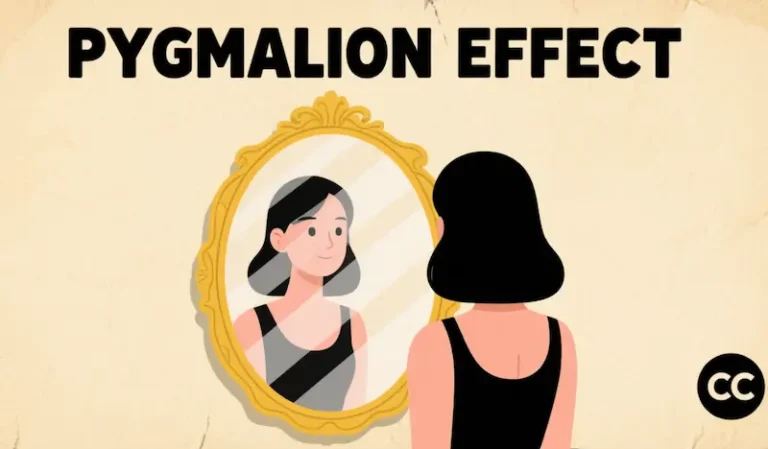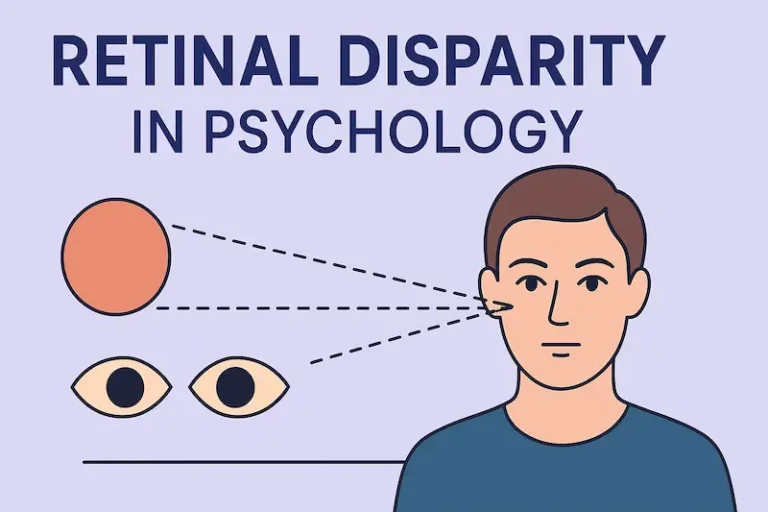Murphy’s Law in Relationships: 5 Unspoken Rules to Stop Anxiety from Ruining Your Bond

Table of Contents
Have you ever planned a perfect dinner date at that trendy downtown bistro—only to spend 20 minutes double-checking the GPS, arrive 30 minutes early, and realize you left the birthday gift for your partner on the kitchen counter? Or maybe you’ve bent over backward to please them, skipping your weekly book club or hiding your frustration when they cancel plans last minute—only to watch the relationship fizzle because you stopped feeling like “you”?
These “bad luck” moments aren’t just coincidences. They’re classic examples of Murphy’s Law in relationships: the more you fear something will go wrong, the more likely it is to happen. This psychological principle acts like a mirror, reflecting the anxiety we hide in intimate connections—and revealing why even the most well-meaning choices can backfire.
In this guide, we’ll break down how Murphy’s Law shapes your relationship, debunk common myths about it, and share actionable strategies to turn fear into confidence. By the end, you’ll stop letting “what ifs” control you—and start building a bond that’s resilient, authentic, and low on unnecessary stress.
What Is Murphy’s Law, and Why Does It Impact Relationships?
First, let’s clear up a common misunderstanding: Murphy’s Law isn’t a “pessimistic prophecy” designed to make you dread relationships. It’s a reminder that our focus shapes our actions—and when we fixate on the worst-case scenario, we often accidentally make it real.
The law was coined by Edward A. Murphy Jr., an American aerospace engineer, after a failed test in 1949. His original quote—“If there’s more than one way to do something, and one of those ways will result in disaster, then someone will do it”—has evolved over time to its now-famous form: “Anything that can go wrong will go wrong.” But in relationships, it’s less about “disaster” and more about how anxiety warps our behavior.
For example:
- You fear your partner is losing interest, so you start checking their text messages while they’re in the shower. This breach of trust makes them feel suffocated—and they pull away, just as you worried.
- You’re terrified of being “too much,” so you never share when their last-minute cancellations hurt your feelings. Resentment builds, and you eventually withdraw—ending the relationship you were trying to save.
The good news? Murphy’s Law isn’t a death sentence for your connection. It’s a roadmap: by identifying the fears driving your actions, you can rewrite the script.
The More You Fear Losing Yourself, the More Likely You Are to Lose the Relationship
One of the most common relationship traps tied to Murphy’s Law is “self-erasure”: the belief that if you give up your hobbies, boundaries, or values, you’ll keep your partner happy. But research from the American Psychological Association (APA) shows the opposite is true: people in long-term happy relationships report feeling “authentic” around their partners—not like they’re pretending to be someone else.
Think about it: Have you ever skipped a workout class you love because your partner wanted to binge-watch a show? Or agreed to a vacation spot you hated just to avoid an argument? These small compromises might feel harmless at first, but they add up. Over time, you start to resent your partner for “making” you give up parts of yourself—or resent yourself for not speaking up.
This is Murphy’s Law in action: your fear of “losing the relationship” leads you to act in ways that make the relationship unfulfilling. It’s like holding a handful of sand: the tighter you grip, the faster it slips through your fingers.
3 Ways to Avoid Losing Yourself in a Relationship
The solution isn’t to stop compromising—it’s to set boundaries that protect your identity. Try these steps:
- Do a weekly “self-check-in”: Every Sunday night, ask yourself: “Did I say ‘yes’ to something I didn’t want this week? Did I skip something that matters to me?” If the answer is yes, plan one small “me” activity for the coming week (e.g., a yoga class, a coffee date with a friend).
- Learn to say “not right now” (kindly): You don’t have to reject your partner outright—just communicate your limits. Instead of, “I guess I can skip book club,” try: “I can’t miss book club this week—it’s my turn to lead the discussion, but let’s plan to hang out tomorrow night.”
- Share your “non-negotiables” early: Talk to your partner about the things that make you you—whether it’s your weekly hike, your love of late-night baking, or your need for 30 minutes of alone time after work. When they understand these things aren’t “optional,” they’ll respect them more.
The More You Fixate on “Right vs. Wrong,” the More Unsolvable Conflicts Become
Imagine this: You’re running 15 minutes late to a concert your partner bought tickets for. When you arrive, they snap: “You never take my plans seriously.” You fire back: “It’s not my fault—the subway broke down!” What starts as a small delay turns into a fight about “whether you care” or “if they’re being unreasonable”—and by the time you get to the venue, you’re both too upset to enjoy the show.
This scenario is far too common. According to a 2023 survey from the Pew Research Center, 73% of people who’ve ended a relationship cite “constant arguments about who’s right” as a top reason. This is Murphy’s Law at play: your fear of being “blamed” or “seen as the bad guy” makes you focus on winning the fight—not solving the problem.
When we fixate on “right vs. wrong,” our brains switch into “defense mode.” We stop listening to our partner and start planning our next argument. Small issues (like a late arrival) escalate into bigger fights (like “you never prioritize me”), and before you know it, you’re both exhausted.
2 Strategies to Stop the “Right vs. Wrong” Cycle
The key to breaking this pattern is to shift from “proving you’re right” to “understanding each other.” Here’s how:
- Use “I feel” statements instead of accusations: Accusations like “You never listen” make your partner defensive. Instead, share how their actions affect you: “When I explain my day and you’re scrolling through your phone, I feel unimportant.” This approach doesn’t blame— it invites empathy.
- Agree on a “cool-down signal”: Pick a simple phrase (e.g., “Let’s hit pause”) that either of you can use when a fight gets too heated. Step away for 10 minutes (drink water, take a walk around the block) to calm down. The goal isn’t to avoid the conversation—it’s to have it when you’re both rational enough to listen.
A couple I worked with (both busy professionals in Chicago) used this second strategy during their weekly “relationship check-ins.” Whenever one of them started raising their voice, they’d say, “Let’s take a snack break.” By stepping away to make tea or grab a granola bar, they avoided blowing small issues out of proportion—and reported feeling more connected within a month.
The More You Test Someone’s Loyalty, the More Likely You Are to Break Their Trust
“Let me fake a breakup text to see if they’ll beg me to stay.” “I’ll mention my ex to see if they get jealous.” “I’ll ignore their calls for a day to see if they care.” These “loyalty tests” might feel like a way to confirm your partner’s love—but according to the Gottman Institute (a leading research center on relationships), they’re one of the fastest ways to destroy trust.
Murphy’s Law explains why: when you test someone’s loyalty, you’re acting on the fear that “they’ll leave me.” This fear leads you to create fake scenarios that put their love to the test—and when they fail (or even question the test itself), you feel validated in your anxiety. But here’s the catch: your partner doesn’t know it’s a test. They just see someone who’s being dishonest, manipulative, or cold.
For example, a friend of mine once pretended to be interested in an old flame on social media to “see if her boyfriend would notice.” He did—and instead of feeling “loved” when he confronted her, she felt guilty. The trust was broken, and they broke up a month later. “I was so scared he didn’t care,” she told me, “that I made him stop caring.”
How to Build Trust Without Testing It
Instead of testing your partner’s loyalty, focus on observing their actions in real life. Trust is built on consistency—not grand gestures. Here’s what to look for:
- Do they show up when they say they will? (e.g., they text you if they’re running late, not just ghost you)
- Do they respect your boundaries? (e.g., they don’t pressure you to move in before you’re ready)
- Do they apologize when they’re wrong? (e.g., they say “I’m sorry I forgot our plans” instead of making excuses)
If you’re feeling insecure, talk about it directly. Instead of, “Do you even love me anymore?”, try: “I’ve been feeling a little distant lately—can we talk about how we’ve been connecting?” This approach is honest, vulnerable, and far more likely to bring you closer.
From Worry to Control: 4 Ways to Use Murphy’s Law for a Better Relationship
Murphy’s Law doesn’t have to work against you. Once you understand that your fears drive your mistakes, you can flip the script: use that awareness to take control of your actions. Below are four actionable strategies to turn anxiety into confidence—backed by psychology and real-world examples.
1. Build an “Emotional Circuit Breaker”
Anxiety thrives on “what if” thinking: “What if they break up with me?” “What if I say the wrong thing?” This spiral can take over in seconds—but you can stop it with an “emotional circuit breaker.” The APA recommends this 3-step process:
- Pause and breathe: Take three deep breaths (inhale for 4 seconds, hold for 4, exhale for 6). As you breathe, say “stop” silently to yourself. This interrupts the negative thought cycle.
- Shift your focus to the present: Do one small, physical task to ground yourself—like folding a napkin, touching a cold glass of water, or listing three things you see in the room. This pulls your brain out of “fear mode” and into the moment.
- Write down the “worst case” and your plan: Grab a notebook and jot down: “What’s the worst that could happen?” (e.g., “They get upset and we argue”) and “What can I do about it?” (e.g., “I can apologize, listen to their feelings, and fix the issue”). This turns vague anxiety into a concrete problem you can solve.
A client of mine (a teacher in Seattle) used this strategy when she worried her partner was pulling away. Instead of overthinking their quiet nights together, she wrote down her fear (“They’re losing interest”) and her plan (“Ask them how their week was, instead of assuming”). The conversation revealed he was stressed about work—not her—and they ended up feeling closer.
2. Create a “Relationship Emergency Plan”
Just like you have a fire drill for your home, you can have a “plan” for common relationship conflicts. This reduces anxiety because you know exactly what to do when things go wrong—no more panicking. Work with your partner to create rules for three scenarios:
- Conflict: “If we argue, we’ll take a 10-minute cool-down break, then come back to talk. No name-calling, no bringing up past fights.”
- Trust doubts: “If I feel suspicious (e.g., they’re secretive with their phone), I’ll say, ‘I’ve been feeling insecure—can we talk about this?’ instead of snooping.”
- Busy schedules: “If we haven’t spent quality time in a week, we’ll block off 2 hours on Sunday for a ‘no-phone date’ (even if it’s just cooking together).”
A couple I know (a doctor and a graphic designer) created a travel-specific plan before their trip to Europe. They agreed: “If we disagree on what to do that day, we’ll each pick one activity—no compromises. I’ll choose the morning, you choose the afternoon.” They returned from the trip without a single fight—and said the plan made them feel more teamwork-oriented.
3. Practice the “Gratitude Recap Method”
Murphy’s Law makes us fixate on the negative: “They forgot my coffee.” “They didn’t text me back.” But this focus on flaws erodes our appreciation for our partner—and makes us more anxious about losing them. The “Gratitude Recap Method” fixes this by training your brain to notice the good.
Here’s how it works: Every Sunday night, take 5 minutes to write down three small things your partner did that made you happy that week. They don’t have to be big—examples include:
- “They made me oatmeal when I was sick on Tuesday.”
- “They laughed at my bad joke about pandas.”
- “They folded my laundry when they noticed I was tired.”
Research from the University of California, Berkeley, shows that practicing gratitude in relationships increases feelings of connection and reduces anxiety. After 3 weeks of doing this, most people report feeling “more secure” in their relationship—because they’re focusing on what’s working, not what could go wrong.
4. Cultivate “Value Attraction”
One of the biggest relationship fears is: “What if they stop liking me?” This fear leads people to change themselves to “fit” their partner—but as we saw earlier, this backfires. The solution is to build “value attraction”: focusing on self-growth so your partner is attracted to the real you.
Self-growth doesn’t mean you have to “fix” yourself—it means investing in the things that make you happy and fulfilled. Try:
- Learning a new skill (e.g., baking sourdough, taking a photography class)
- Reconnecting with old friends (e.g., a monthly lunch date with your college roommate)
- Prioritizing your health (e.g., a weekly hike, a nightly meditation practice)
When you focus on your own happiness, you become more confident—and confidence is attractive. A 2022 study from the Journal of Social and Personal Relationships found that couples where both partners pursue personal goals report higher satisfaction than couples who “merge” their lives completely. As one participant put it: “I love that my partner has hobbies I don’t share—It gives us something to talk about, and it makes me proud of them.”
CTA
Murphy’s Law in relationships isn’t about avoiding mistakes—it’s about understanding why they happen. The next time you find yourself worrying about “ruining” your relationship, remember: your fear isn’t a prediction—it’s a warning. It’s telling you to slow down, check in with yourself, and act with intention.
As the psychologist Irvin Yalom once said: “The ultimate freedom in relationships is seeing the inevitability of imperfection—and choosing to love anyway.” A mature, happy relationship isn’t one where nothing goes wrong. It’s one where you and your partner handle the “wrong” together—without letting fear take over.
So, what’s one small step you can take this week to use Murphy’s Law for good? Will you try the “Gratitude Recap Method”? Or have a conversation about your “non-negotiables”?
Share your plan in the comments below—I’d love to hear how you’re turning anxiety into confidence. And if you know a friend who’s stuck in the “fear cycle” with their partner, pass this guide along. Together, we can stop letting Murphy’s Law ruin relationships—and start using it to build stronger ones.







Hi my friend! I want to say that this post is amazing, nice written and come with almost all important infos. I¦d like to peer more posts like this .
Way cool, some valid points! I appreciate you making this article available, the rest of the site is also high quality. Have a fun.
Attractive section of content. I just stumbled upon your blog and in accession capital to assert that I get actually enjoyed account your blog posts. Any way I’ll be subscribing to your feeds and even I achievement you access consistently quickly.
I do love the way you have framed this specific problem plus it does indeed present me a lot of fodder for thought. Nevertheless, coming from what precisely I have personally seen, I just simply wish when the actual remarks pack on that individuals stay on issue and not embark upon a tirade regarding the news du jour. All the same, thank you for this fantastic point and while I do not really agree with this in totality, I regard the point of view.
Great perspective